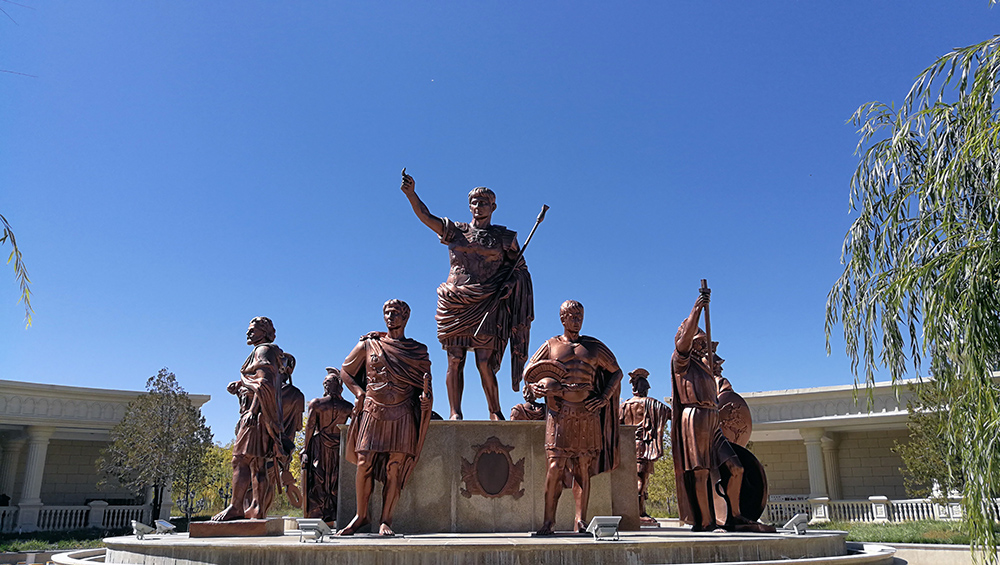Entering China from the depression of Mongolia, the
modern visitor is in for a remarkable surprise. High on top of a Corinthian
column stand two bronze figures, a Chinese and a Roman soldier greeting each
other. Behind it, two rows of white columns line up in sharp contrast with the
cloudless blue sky.
A short distance
away, a group of eleven, life-size Roman legionaries is immortalized in bronze.
Behind it is the entrance gate to a Roman world in the style of Disneyland. The monument is a mixture of a Buddhist and a Roman temple with Ionic columns holding a pediment. A unique way to
attract tourists to the Chinese frontier! What happened
here? What triggered this staging? What is the truth behind this story?
We must go back to 60 BC when Rome’s First Triumvirate was formed
between Caesar, Pompey, and
Crassus. Pompey is envious of Caesar’s successes in Gaul
and recent friendship with Crassus. They were three very different men who came together to achieve their own
goals. Once they agreed to their role in this new form of government, Caesar
returned to Gaul, Pompey
stayed in Rome
and Crassus
went east.
Crassus was the
richest man in Rome but he was not a military man. Still, he sought glory on the battlefield similar
to that of his co-rulers, and decided to attack Asia Minor.
His army was defeated by the Parthians and Crassus was killed at the Battle of Carrhae in 53 BC (see: Harran,
better known under its Roman name Carrhae). Some 20,000
soldiers died on the battlefield and 4,000 returned to Syria.
Yet 10,000 of
his troops were taken prisoner by the Parthians (see: Who were the Parthians?) and sent to Margiana to man the frontier. In 36 BC, the Parthians forced the Roman prisoners to participate
in the Battle of Zhizhi, Kazakstan, against
the Chinese. The victorious Chinese of the Western Han Dynasty were
so impressed by the fighting skills of their opponents that they took them to the city of Liqian or Li-chien – maybe a transliteration of Alexandria or the Roman word Legion - in the
region of Gansu
in western China.
A
number of inscriptions discovered in the Kara-Kamar
caves on the border between eastern Uzbekistan
and Turkmenistan
were written in Bactrian, Greek, Arabic, and Latin. The latter one was composed
of three lines and was left by the Roman soldiers of the Pannonian Legio XV
Apollinaris around the 2nd century AD (see: First contacts with China). A proof that the Romans had been there?
It is a fact
that about 50% of the population of Liqian has green and
blue eyes and a Roman aquiline nose. This may be
wishfully attributed to the Roman presence some 2,000 years ago. Another theory
circulates that the Chinese mingled with people from Siberia.
As so often, it is unclear where history and legend start or end.
[top and bottom pictures from That's Mags]



No comments:
Post a Comment